Tips/improvements:
- N/A
- When sanding the cavity of the lower grille back to bare metal, use the disc sander on the dremel - however, be careful not to sand too much. As soon as you see bare metal, move on to the next spot. Do not apply a lot of force - just skim the surface just enough to sand things off. It's just very easy to drop the Dremel and let it do the work, so try and use it gracefully!
- Keep in mind that the epoxy bonds best with bare materials (metal/plastic). It is not as effective against paint or clearcoats.
- Make sure you cut out a larger section, as you can always sand it down to make it fit later on.
- Make sure you cut out a larger section, as you can always sand it down to make it fit later on.
- I guess my only tip here is take lots of time. Make small adjustments until it fits perfect. If that means 100 trial fits, then so be it. More, small adjustments will get a better result as opposed to fewer, but larger adjustments.
- I guess my only tip here is take lots of time. Make small adjustments until it fits perfect. If that means 100 trial fits, then so be it. More, small adjustments will get a better result as opposed to fewer, but larger adjustments.
- An extra person to help out with the alignment would be great, but if no one's available, masking tape should suffice while you do one side first.
- Make sure the epoxy is spread over most of the bare metal to increase the strength of the bond (well, that's what I think anyway). Frequently check the alignment as it's very important it sits perfect with the rest of the grille. A slight misalignment here and there will lead to frustratingly big sanding problems later and the final product will most likely come out shit.
- If you feel the epoxy is starting to harden and you still need to work it around a bit more, take it all out and throw it away. The epoxy hardening is a sign that it's bonding, and if you're just starting to apply it when it's nearly hard, it will not bond as strongly. This is very important, as the joints may show up some cracks in the final product due to insufficient time to bond - this is exactly what happened to mine on the top slats.
- Do little sections at a time. It will help greatly in the alignment. When I mention little sections, I mean both the front side AND the back of the same section. I think it may bond stronger if the consistency/time of hardening is employed in the same sections - that said, having the section aligned is much more important IMO, so decide a little compromise for yourself. This DIY is easy to do, but extremely hard to get right.
- The bonding does not have to look pretty; you will be sanding it down anyway. However, DO make sure the bond covers most of the bare metal part.
- Instructions say to leave the epoxy bond to do its job overnight. I left it for nearly a week; I like to think it holds stronger for longer if I do that. It's probably just a placebo effect, but I left it alone for that long anyway, as I went on to do other parts of the DIY while I let it stand.
- I found it easier to cut if I just marked the section in a rectangular manner, as opposed to cutting it right on the edges of the circle. In retrospect, both methods wouldn't end up being harder to do than the other throughout the whole job.
- I found it really hard to use a grinding disc on the Dremel to cut the plastic slats, so I ended up putting a drill bit on the end of it and slicing it side on. It doesn't matter if the lines are straight or not either, though it would make things easier if they were.
- The dimensions don't have to be accurate - as long as they're long enough to allow for adjustments to get the centering right.
- Again, it doesn't matter if the cut-out is not straight - as long as it's done with enough length to allow for adjustments.
- Remember step 4?
- Regarding the sanding to bare plastic - you won't need as much surface (compared with the metal grille) as the overall area is smaller and it will be more beneficial to use just enough epoxy as sanding it down later on becomes a bit of a nightmare.
- Don't worry about getting any previous paint completely off - as long as its roughed up, it should be fine.
- Similarly to step 5, work the epoxy before it hardens. Basically, just follow the same instructions as in step 5, except you would need to take even MORE care in handling the epoxy and also in the aligning. This step is so much more harder to get right than doing the lower grille, mainly because we're working on a much more defined and smaller area, and it's on plastic. By the way, to make sanding easier later, make sure the edges of the epoxy bond are smoothed out - use a bit of water on your fingertips and flatten/smooth out the edges.
- It's better to do the bottom section first; this part is easy to do and just requires proper alignment. Take into consideration the alignment of the slats as well, cos once fixed, there won't be much room for the slats to be 'adjusted' so get them each aligned properly when bonding.
- Checking out the grille from different positions and angles helps a lot in your perception of the alignment. If you have the patience, once you got it aligned, hold it there for 15 minutes, checking the alignment on it every minute or so. Remember, it is VERY important that they are aligned properly, as there's simply not enough plastic in the slats to allow you to fix up misalignments. Get it as straight as possible, and make sure the slats flow at every angle you can see. If you can't get it right, take the bond out before it completely hardens and re-do it.
- Regarding the wet-sanding step - I failed to do this, and only discovered the miracles of wet-sanding when I was going for an even finish on the paint job. I was too late then, and I couldn't be bothered re-doing the sanding after so many layers of paint :( Though I wish I did.
- Anyway, spend plenty of time wet-sanding. Try and apply even pressure as you're trying to achieve an ultra smooth, super level surface. Have a thin sandwich plastic bag handy - use it to "see" any uneven-ness on the surface by feel. Progress on to the next grit when the sand markings of the previous grit are totally gone. You can easily tell this by changing direction every time you change sandpaper grit. Putty/bond over cavities that present themselves. A thin layer is all that is needed, as you don't your surface to be overly 'bumpy'. Once you 400 grit (or similar) sandpaper, wetsand the entire surface in prepation for paint. Leave your final grit to be about 600-800, as the surface requires some roughness for the paint to adhere to.
- I went crazy with the coats of paint as I wanted to try and disguise the markings. It nearly worked - the more layers I put on, the more masked it became.
- The wet-sanding helped disguise the marking even greater and I was quite happy with the result. A step that shouldn't be skipped!
- Again, copious amounts were used for the clear-coating - I think I put on at least 4 layers. This gave it a more glossy feel to it, and the white now gave off a bit of a shine. Clear-coat, in my visual judgement, emphasised the marking a bit more, though it made the paint look better. At most angles, the marking cannot be seen, but at certain angles reflecting off the light, you can see a colour change. I don't know what causes this, but it's quite apparent in the picture just below.

- I found that it was generally easier if I used the same grit on ALL the bonded parts first, and then progress on to another grit. Also, use the plastic bag trick to check for levelness; fix accordingly.
- Similarly to aligning the slats together for epoxy bonding, make sure you check every angle of the slats, visually evaluating the levelness. Smooth over when necessary.
- Don't go apeshit on the sanding - be gentle. Remember that the plastic slats are thin, and any sizeable force can break the bonded parts. It's better to take your time sanding than trying to hurry it. I'm said it billions of times, but it's crazy how there's such an overwhelming feeling of trying to get it over and done with ASAP.
- While wet-sanding, continually spray the surface free of dust-sand particles with water, and also spray the particles on the sand paper off. I was able to use the same 120 grit sandpaper again and again this way.
- Keep a towel or rag handy to wipe away any dirt and water on the slats - it's good to inspect it and see how you're going with it, along with 'feeling' your progress too
- With the primer, it's best to make multiple ultra-light coats with enough time between each coat to dry. I sprayed a heavy coat at once, and I ended up accumulating a reservoir of primer at one end of the grille as they're quite runny. Needless to say, I've got a patch of thick primer on one corner of the grille, but it's not really that noticeable.
- Now, I was originally going for the colour-coded option, but knowing how impossibly difficult it is to get it looking perfect, I decided at the last minute to get it that black-textured look instead. That way, the imperfections aren't as easily seen.
- Multiple layers help cover up very minute imperfections. After about 4 layers, I called it a day and left it to stand overnight. I sprayed another 4 the next day. The grille was a very rich black.
- I had lots of different shades of black when I started this. I had matte black from way back when I did the Joey-mod; I had the plastic and bumper black from which I sprayed the sideskirts with (bought from Autobarn - great nozzle to use, but shit paint), and Pedro's plastic and bumper black from Septone. Now, the Autobarn paint was easy to use and a breeze to apply, but came out shit. Pedro's paint was annoying to use (paint didn't come out evenly at different angles, even though there was quite a bit left in it) and also dull to look at, but the matte black looked great with a fine, even finish. However I only had a little left. What I ended up doing was using all three different paints - the Septone and Autobarn one was mainly used as the bottom layers, while I finished off with the matte black.
- While you can't generally see the underside, it doesn't hurt to cover up the bonded area to get a more clean finish.
- Since the wet-sanding worked sooooooo great for me in the previous steps, I decided to do it before I cleared. Bad decision - the paint was pale after that. But no biggie - put another coat of matte black and it was looking tip top again. Then I cleared. And cleared. And cleared. And cleared. I still loved wet-sanding, so I did it. And it paled AGAIN! At this point I just couldn't be f*cked anymore, so I just put a layer of matte black over the clear, and now it looks good. Very texture-like. Don't know how long that'll last, but I'll take my chances. Anyway, the moral is, don't wetsand here! I don't know why it pales so I can't explain why it does that.
- Before I started this DIY, the passenger side of the grille was always sticking out, as if it didn't fit on properly. I've now rectified the problem by bending it back a little, and it looks as new with the tighter fitment.
- Slightly different shade of white between the pieces
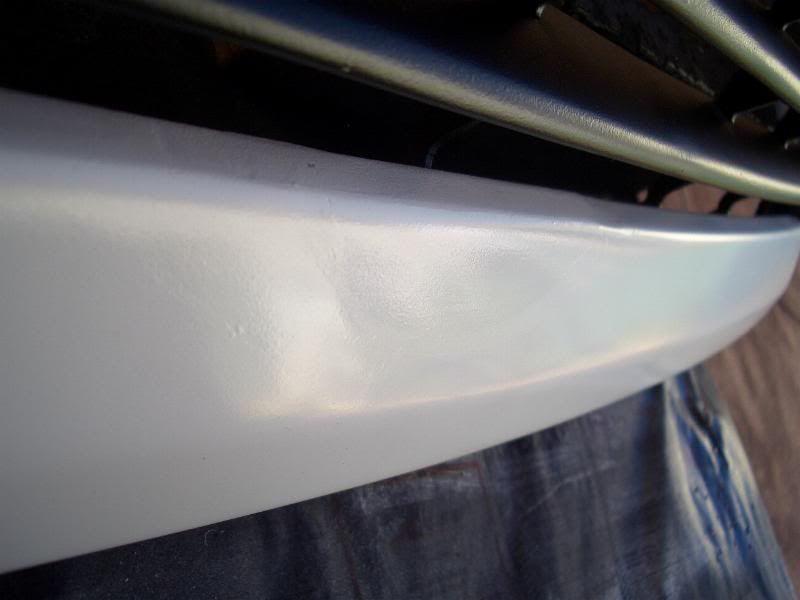
- Misalignment problem on one side of the lower metal part
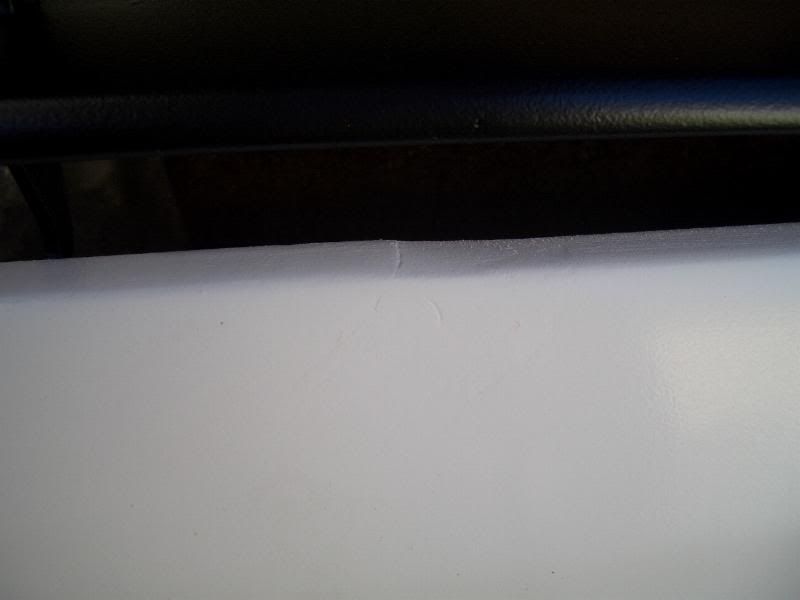
- Top slat cracks
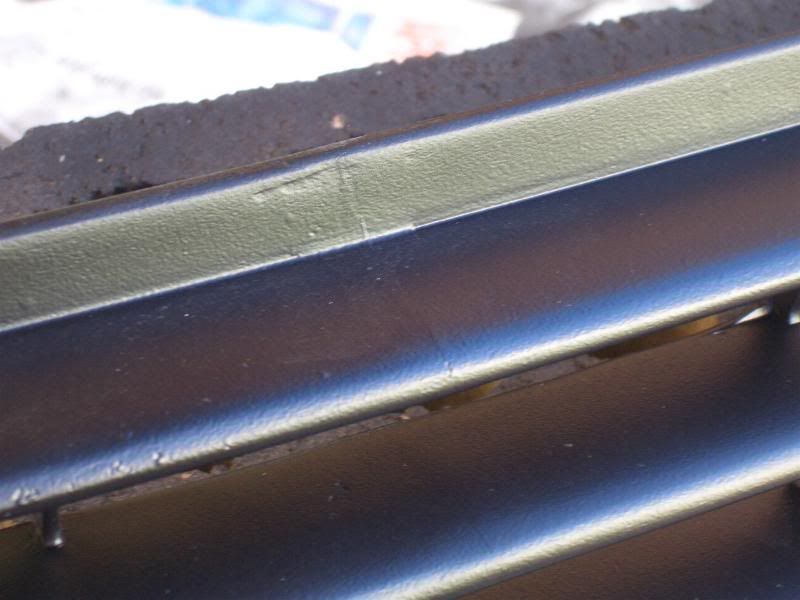
- Small cavity that I didn't notice until the layer of paint went on

- Remnants of what was left from the cut out in step 6 - I didn't want to risk over-sanding so I just sanded as much as I could by hand. Hardly noticeable.
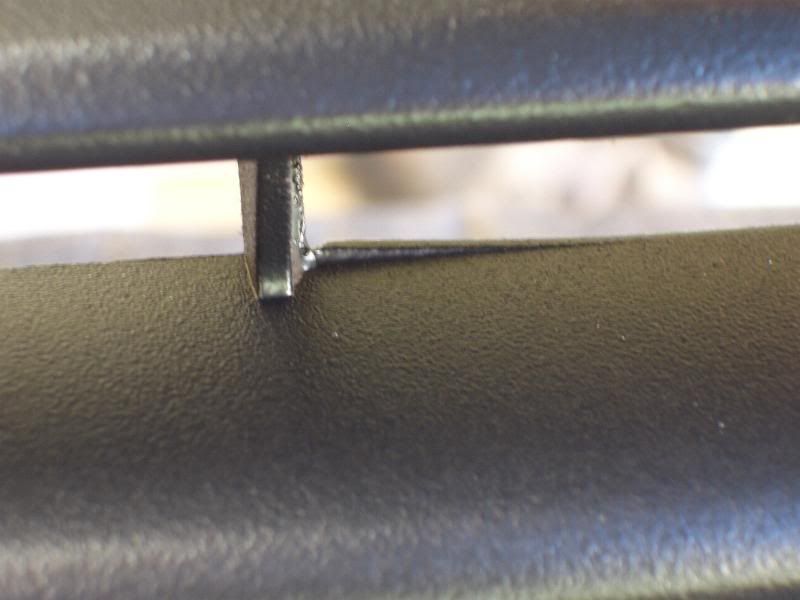
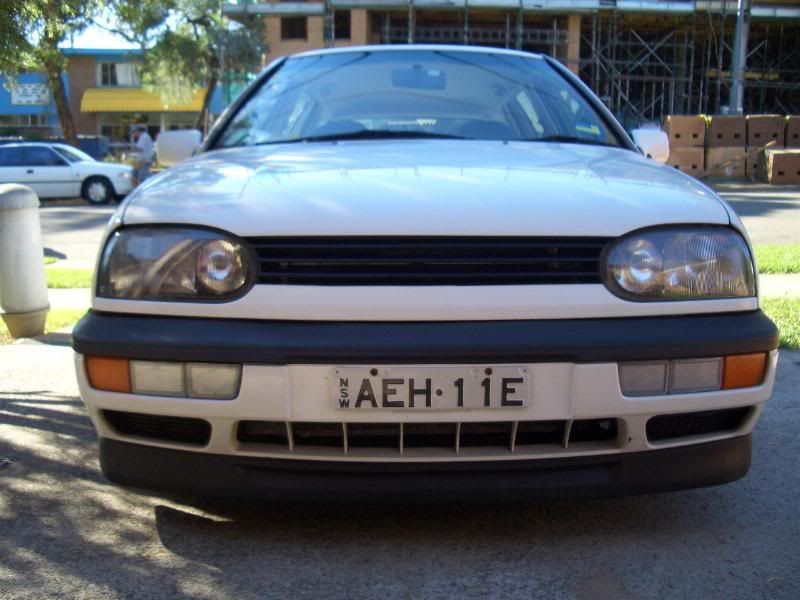
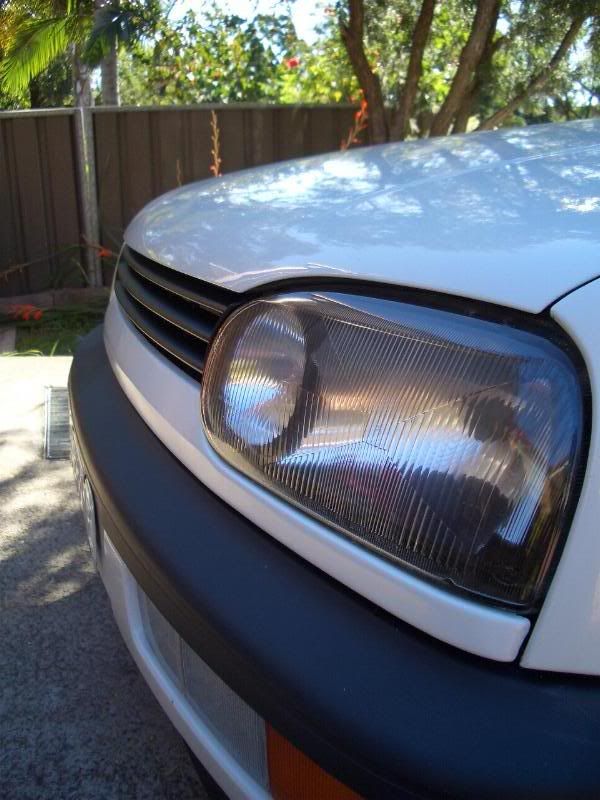

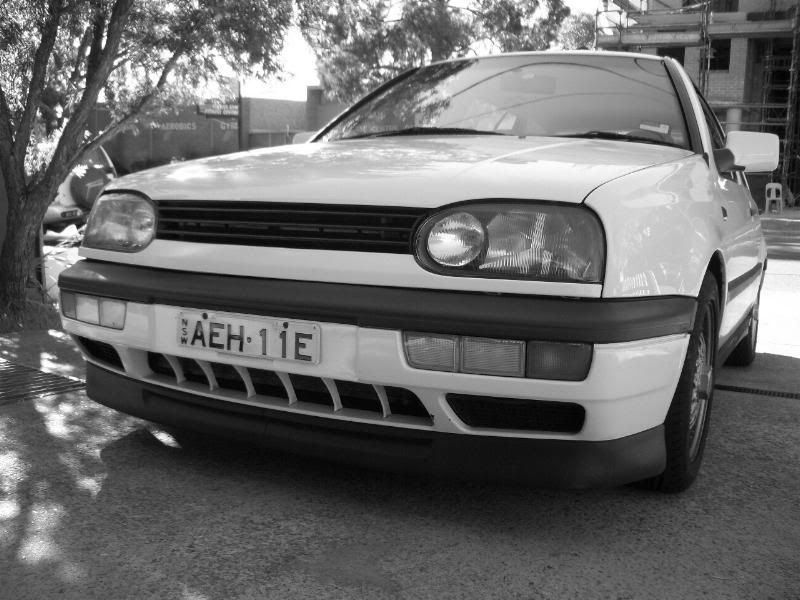
All the pics to do with this DIY are in my Photobucket.
Over and out.

2 comments:
You are the king of DIY! Great job on the badgeless grill. I'm too scared to attempt anything like that, lol. At least not with my $170 early Vento grill. Maybe if I had a few stocker grills to mess around with.
I really like your blog and i really appreciate the excellent quality content you are posting here for free for your online readers. thanks peace claudia.
Post a Comment